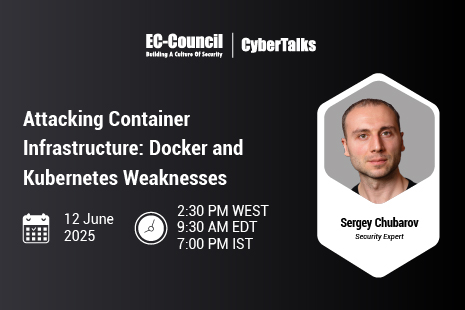When most people think of malware, they associate it with viruses and Trojans that can cause wreak havoc on their computers. However, malware is a broad term covering a wide range of malicious code, from simple viruses to complex spyware and ransomware.
It is important to understand what malware is and how it works so you can protect your computer against these threats. This is where reverse engineering malware comes in—by understanding how malware works, you can develop strategies to protect yourself against it.
What Is Reverse Engineering Malware?
Reverse engineering malware is the process of analyzing malware to understand its functionality and purpose. This process can determine how to remove the malware from a system or create defenses against it (Ortolani, 2018).
Reverse engineering malware is challenging, as malware is often designed to be difficult to analyze. Typically, a malware reverse engineering program would be necessary to become proficient at it. Threat actors may use obfuscation techniques, encryption, and other tricks to make the programs more complex. In addition, malware authors may change the code frequently to make it harder to reverse engineer.
When Should You Reverse Engineer Malware?
Reverse engineering is a critical part of understanding and combating malware. When malware is discovered, the first thing that security researchers want to know is how it works.
However, simply understanding how malware works isn’t enough to protect against it. To be truly effective, security researchers need to be able to not only understand how malware works but also predict how it will evolve.
Security researchers must have a strong understanding of assembly language and computer architecture to reverse engineer malware. Assembly language is the lowest level of programming language, and it’s used to write programs that are very close to the hardware. This makes it ideal for writing malware, as it gives the attacker much control over what the code does.
Computer architecture is the study of how computers are designed and how they work. By understanding computer architecture, security researchers can better understand how malware works and how it can be used to attack systems.
What Are Static and Dynamic Malware Analysis?
Static analysis can be done by examining the code itself or looking at its metadata, such as timestamps or file hashes. Static analysis can be used to understand what a piece of malware does without worrying about it causing any damage.
Dynamic analysis is the process of executing malware to observe its behavio (Difference Between, 2018). This can be done by running the code in a controlled environment, such as a virtual machine or sandbox. Dynamic analysis can be used to identify how malware behaves when it is running (Sowells, J. 2019).
Both static and dynamic analysis have their strengths and weaknesses. Static analysis is less likely to cause damage to a system, but it can be challenging to understand what a piece of malware does without executing it. Dynamic analysis is more likely to cause damage to a system, but it can provide more insight into how malware works.
What Are the Steps of Reverse Engineering?
When it comes to reverse engineering, six steps are generally followed to successfully carry out the process:
- Acquire a sample of the malware by downloading it from the internet or receiving it from someone else.
- Obtain a disassembler or decompiler. Many different programs can be used for this purpose.
- Use the disassembler or decompiler to analyze the code of the malware. This will help you understand how the malware works and what it does.
- Create a sandbox environment, which is a safe place where you can run the malware to see what it does without risking infecting your computer.
- Run the malware in the sandbox environment and observe its behavior.
- Generate a report of your findings. This will help you communicate your results to others who may be interested in reverse engineering the malware.
Are Reverse Engineering and Malware Analysis the Same?
Reverse engineering and malware analysis are two essential components of the cybersecurity field. Though both terms are often used interchangeably, they refer to two different types of activities.
Reverse engineering is the process of taking something apart to understand how it works (TechTarget, 2022). This can be applied to hardware, software, or any other type of system. Often, reverse engineering is used to create a duplicate or compatible version of a product.
Malware analysis, on the other hand, is the process of studying malware to understand its function and purpose. This information can then be used to develop ways to protect against or remove malware.
So, while reverse engineering and malware analysis are important cybersecurity tools, they are not the same. Reverse engineering is more about understanding how something works, while malware analysis is more about understanding what something does.
How Do Hackers Use Reverse Engineering?
Hackers often use reverse engineering to find vulnerabilities in systems and devices.
In many cases, hackers will obtain a copy of the software or hardware they want to attack. They will disassemble it, looking for ways to bypass security features or exploit weaknesses.
Reverse engineering can also be used to create pirated copies of copyrighted software or hardware. In some cases, hackers may even create new versions of existing products with added features or improved performance.
Why Is Reverse Engineering Unethical?
One of the most common unethical uses for reverse engineering is to create “malware clones.” A malware clone is simply a copy of an existing malware sample, with slight modifications made to its code to avoid detection by anti-virus software. This is considered unethical because it allows the clone creator to distribute their own version of the malware without creating their own original strain.
Another common unethical use of reverse engineering malware is to create “trojanized” versions of legitimate software. This involves taking a legitimate piece of software, such as a game or a utility program, and adding malicious code to it. The resulting trojanized software will then perform some malicious action when it’s executed, such as stealing passwords or deleting files. As with malware clones, this is considered unethical because it allows the creator of the trojanized software to distribute their own version of the software without making the original strain.
Finally, “botnets” are also an unethical way to use reverse engineering malware. A botnet is a collection of computers infected with malware that is controlled by a remote attacker. The attacker can use the botnet to launch distributed denial-of-service (DDoS) attacks, send spam e-mails, or even steal sensitive information.
Malware reverse engineering jobs analyze and understand the behavior of malware. This understanding can be used to create defenses against the malware or to take down the threat actors behind it. Hackers also use reverse engineering as a way to learn about specific malware functions so they can exploit its vulnerabilities. While reverse engineering has many benefits, it also raises some ethical concerns.
Looking for a Career in Ethical Hacking?
EC-Council’s best ethical hacking courses are designed to provide in-depth knowledge of the latest commercial-grade hacking tools, techniques, and methodologies used by hackers and information security professionals. This ethical hacking course will also teach you how to hack an organization lawfully and how to reverse engineer malware as a beginner. This Certified Ethical Hacker course will help you advance your career in the information security field and is a valuable asset for any ethical hacker.
Enroll and learn with the CEH course now. For more details, visit: https://www.eccouncil.org/train-certify/certified-ethical-hacker-ceh/
References
Ortolani, S. (2018, March 1). Reverse engineering malware — a look at how the process has evolved. https://www.lastline.com/blog/reverse-engineering-malware/
Difference Between. (2018, July 23). Difference between static malware analysis and dynamic malware analysis. http://www.differencebetween.net/technology/difference-between-static-malware-analysis-and-dynamic-malware-analysis/
Sowells, J. (2019, April 25). Static Malware analysis vs dynamic malware analysis. Hackercombat. https://hackercombat.com/static-malware-analysis-vs-dynamic-malware-analysis/
TechTarget. (2022, September 17). What is reverse-engineering? how does it work? https://www.techtarget.com/searchsoftwarequality/definition/reverse-engineering
About the Author
Ryan Clancy is a writer and blogger. With 5+ years of mechanical engineering experience, he’s passionate about all things engineering and tech. He also loves bringing engineering (especially mechanical) down to a level that everyone can understand. Ryan lives in New York City, and writes about everything engineering and tech.












